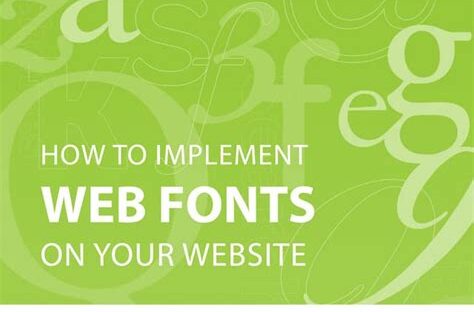
In the digital landscape, your website’s typography plays a crucial role in shaping user experience and brand identity. The right web fonts can enhance readability, boost engagement, and create a cohesive visual appeal. Conversely, poor font choices can lead to frustration, decreased accessibility, and a diluted brand message. This comprehensive guide will navigate you through the process of selecting and implementing web fonts effectively, transforming your website’s aesthetic and functionality.
Web fonts are not mere stylistic elements; they are integral to a successful online presence. Their impact extends far beyond aesthetics, influencing critical aspects of your website:
Selecting the perfect web font requires careful consideration of several factors. It’s not simply about picking a font you like; it’s about selecting a font that aligns with your website’s goals and target audience.
Before diving into font selection, clearly define your brand personality and target audience. Are you targeting a young, tech-savvy audience or a more mature, professional demographic? Your brand’s voice should be reflected in your font choices. A playful brand might benefit from a script font, while a corporate brand might prefer a clean sans-serif.
Fonts are categorized into various classifications, each with distinct characteristics. Understanding these classifications helps narrow down your options:
Readability is paramount. Choose fonts with clear character shapes and sufficient x-height (the height of lowercase letters). Avoid overly stylized or decorative fonts for body text. Consider the contrast between the text color and the background color to ensure sufficient readability for users with visual impairments. Adherence to WCAG guidelines is essential for accessibility.
Font metrics refer to the spacing between letters and lines. Kerning is the adjustment of space between individual letter pairs to improve readability and visual appeal. Proper kerning and leading (line spacing) ensure comfortable reading even for lengthy texts.
Once you’ve narrowed down your font options, thoroughly test them on your website. Consider various screen sizes and devices. Gather feedback from users to assess readability and overall experience. Be prepared to iterate and refine your choices based on user testing and performance metrics.
Implementing web fonts involves several strategies, each with its own advantages and disadvantages. Choosing the right approach depends on your technical skills, website requirements, and performance considerations.
Google Fonts is a widely used and free resource offering a vast library of high-quality open-source fonts. Its ease of implementation and widespread availability makes it a popular choice for many website developers. Simply include a link to the desired font in your website’s header, and you’re ready to use it.
Example:
“`html
“`
Self-hosting involves downloading font files and uploading them to your web server. This offers greater control and customization but requires more technical expertise. It also necessitates careful consideration of file formats (WOFF2 is generally recommended for its smaller file size and better browser compatibility) and proper organization.
A CDN distributes your font files across multiple servers globally, improving website loading speed and performance, especially for users located far from your web server. Services like CloudFlare and Amazon CloudFront offer CDN services.
Optimizing font loading is crucial for performance. Techniques include:
Even with careful planning, you may encounter issues during web font implementation. Here are some common problems and their solutions:
Analyzing successful websites showcases the impact of well-chosen and implemented web fonts:
These examples highlight the importance of choosing fonts that reflect brand identity and contribute to a positive user experience.
Selecting and implementing web fonts is a critical aspect of web design. It impacts readability, user experience, brand identity, website performance, and accessibility. By following the guidelines presented in this guide – understanding your brand, choosing appropriate font classifications, prioritizing readability and accessibility, and optimizing font loading – you can transform your website’s aesthetic and functionality. Remember to test and iterate, ensuring your chosen fonts enhance, rather than detract from, the overall user experience. The investment in thoughtful typography pays significant dividends in terms of user engagement and brand success.